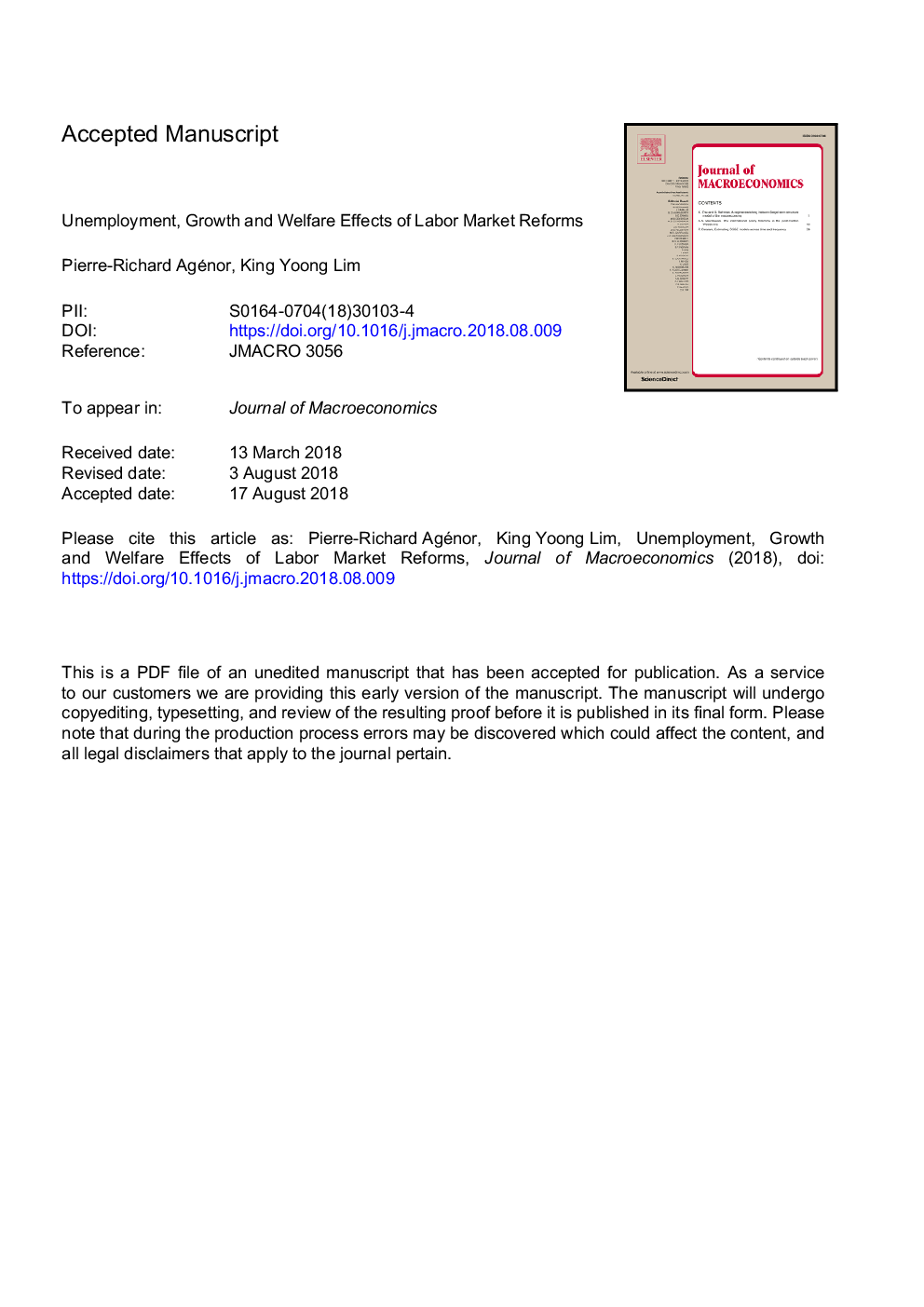| Article ID | Journal | Published Year | Pages | File Type |
|---|---|---|---|---|
| 8954599 | Journal of Macroeconomics | 2018 | 44 Pages |
Abstract
The effects of labor market reforms are studied in an innovation-driven model of endogenous growth with a heterogeneous labor force, labor market rigidities, and structural unemployment. The model is calibrated for a stylized middle-income economy in Latin America and used to perform a range of experiments, including both individual labor market reforms (cuts in the minimum wage and unemployment benefit rates) and composite reform programs involving additional measures. The results show that individual reforms may generate conflicting effects on growth and welfare in the long run, even in the presence of positive policy externalities. A reduction in training costs may also create an oversupply of qualified labor and higher unemployment in the long run. Public investment in infrastructure, partly through its effects on innovation, can help to mitigate this oversupply problem.
Related Topics
Social Sciences and Humanities
Economics, Econometrics and Finance
Economics and Econometrics
Authors
Pierre-Richard Agénor, King Yoong Lim,
